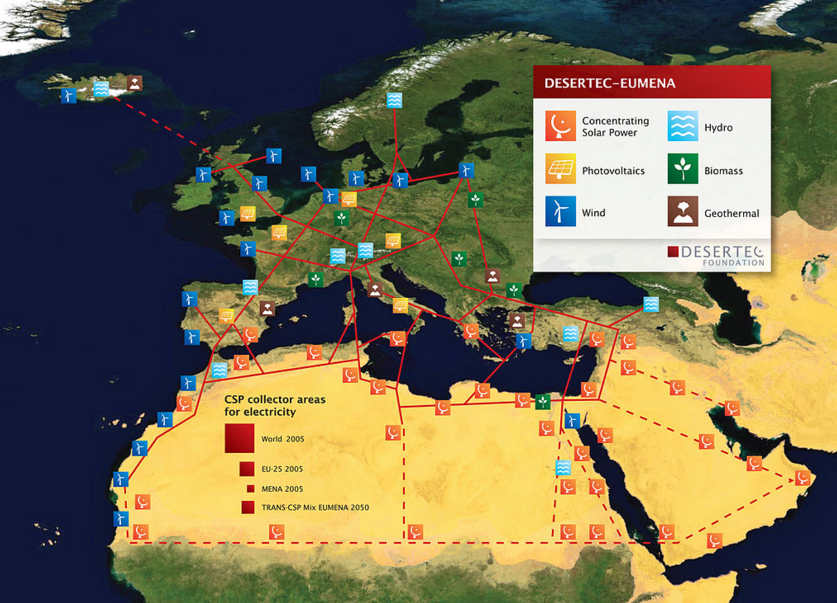This week, Morocco switched on the first section of its new Ouarzazate solar power plant. The new installation already creates 160 megawatts of power and is expected to grow to cover 6000 acres by 2018 — making it the largest in the world.
Noor 1 will be joined over time by Noor 2 and 3 which are expected to be finished by 2018. When those sections come online, the whole plant will cover an areas of over 6000 acres, which is larger than the country’s capital city of Rabat. With the extra mirrors in place, the plant will generate 580 megawatts of electricity — enough to provide energy for 1.1 million people.
The initial plan was to deliver the generated electricity to Europe but several partners pulled out. Interventions by the African Development Bank and the Moroccan government saved the project, though, and are now using it to meet Morocco’s own power demands. As of today, it will do just that.
- Desertec is an important project for Germany. From the political point of view this initiative is meant to show Germany's strong commitment to promoting the use of renewable sources of energy and to supporting economic growth in African countries. Furthermore, this project is intended to support Germany’s concept of Energy Revolution which envisages increasing the share of renewable sources of energy in countries' energy balances, climate protection, heightened security of supplies and diversification of energy supply sources to Europe (made possible thanks to greater integration of African and European energy networks). Additionally, the Desertec project, which involves mainly German companies, was intended to be a profitable investment for Germany’s economy and aimed at strengthening Germany's reputation as the leader in the technology leader for renewable energy production.
In November 2009 Morocco announced a solar energy project worth $9 billion which officials said will account for 38 percent of the North African country's installed power generation by 2020. Funding would be from a mix of private and state capital. The ceremony was attended by U.S. Secretary of State Hillary Clinton and the Moroccan king.The project will involve five solar power generation sites across Morocco and will produce 2,000 megawatts of electricity by 2020. The project would add in terms of power generation the equivalent of the current electricity consumption of the country's commercial capital Casablanca. Germany has expressed its willingness to participate in the development of Morocco's solar energy project which the country has decided to carry out, as did the World Bank. Germany will also take part in the development of a water-desalination plant.
A net energy importer, Morocco launched the National Renewable Energy and Efficiency Plan in February 2008 to develop alternative energy to meet 15% of its domestic needs and increase the use of energy-saving methods. The plan is expected to create more than 40,000 jobs and stimulate over €4.5bn in investment by 2020. The National Plan for the Development of Solar Thermal Energy, formulated in 2001, aims to install 440,000 solar-powered water heaters by 2012, of which 235,000 are completed. The Moroccan government plans to produce 40% of its energy from renewable sources by 2020.
In 2008 Morocco announced plans for a new campus providing knowledge-based services to strengthen research and training in clean technology. The campus is part of a US$ 219 million clean energy industrial park being built in the eastern city of Oujda to support private sector investment as well as renewable energy companies. Building is under way, and the campus is expected to open by 2010.
Many initiatives are dedicated to renewable energy such as solar power plants, pumping stations, hydraulic turbines, waste recycling, water pumps, sea water desalination, air conditioning and solar water heaters. RE is also the focus of many economic and social programs, as in the case of rural electrification, where individual photovoltaic solar systems account for 7% of energy production.


No comments:
Post a Comment